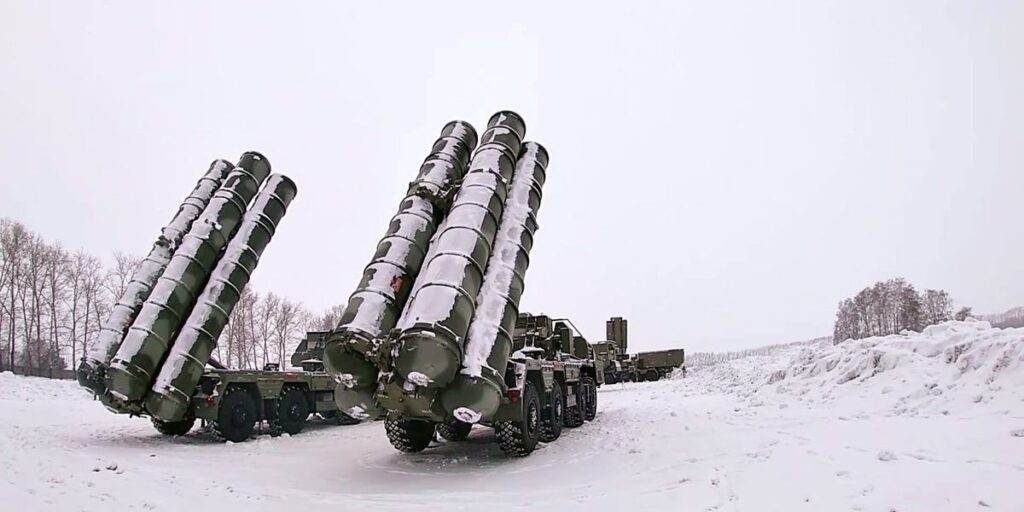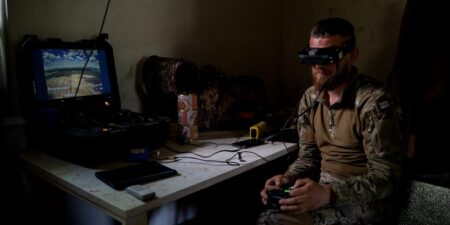- Europe is worried that Russia could attack countries beyond Ukraine.
- At the same time, Trump has suggested the US would be less involved in helping its NATO allies.
- Without US support, Europe lacks a key capability needed in a conflict with Russia, experts told BI.
If President-elect Donald Trump cuts US military cooperation with Europe, its NATO allies there would lose a key capability needed to resist Russian aggression.
Europe relies heavily on the US for the use of aircraft and weaponry to target air defense systems, known as suppression of enemy air defenses, or SEAD.
If a military can’t execute this critical mission, its aircraft are hindered and vulnerable, unable to strike or protect, leaving its ground forces much more exposed and less effective.
“One of the most crucial things that Europe is lacking is SEAD,” Tim Robinson, a military aviation specialist at the UK’s Royal Aeronautical Society, told BI. He described SEAD as “a crucial role,” but one Europe has let “wither the vine.”
Reliance on the US
There are few dedicated SEAD platforms on the continent. Germany and Italy’s Tornado aircraft carry the AGM-88 HARM munition for targeting radars and are equipped with the needed Emitter Location System, but those are set to be retired next year.
Other NATO partners operate F-16s, which can have a SEAD role, but only US Air Force Fighting Falcons are equipped with the HARM Targeting System for better SEAD.
US allies in Europe are increasingly looking to replace older aircraft with F-35s, but only a few are also acquiring AGM-88 missiles.
(These missiles are highly capable for SEAD missions and were delivered to the Ukrainian air force for this purpose, but less so for the destruction of enemy air defenses, or DEAD, missions.)
“The F-35 was designed specifically to be able to operate against modern SAM systems in both the penetrating strike and SEAD/DEAD roles,” Justin Bronk, an air power expert at the Royal United Services Institute, wrote early last year.
He highlighted the fifth-generation jet’s advanced stealth, electronic warfare, and active and passive sensor suite for detecting enemy surface-to-air missile systems.
“Despite these very impressive capabilities, simply fielding the F-35 is not sufficient as an answer to European NATO’s SEAD/ DEAD problem in itself,” he said.
This situation has left Europe heavily dependent on the US, less than ideal amid questions about US reliability and as Russia’s war in Ukraine has shown how important defeating enemy air-defense batteries is in modern conflict.
In Ukraine, neither side has been able to conduct successful SEAD operations, leaving both air forces hugely hampered and forcing ground units into grinding battles with heavy casualties.
Mattias Eken, a missile defense expert at the RAND Corporation, said an important lesson from the Ukraine war has been that “air forces must be able to find, suppress, and destroy” mobile surface-to-air missiles to achieve air superiority “against even moderately equipped state opponents.”
Eken added that no other Western air force except the US has significant SEAD capabilities. All other NATO forces “have limited penetrating assets, munitions stocks, and experience in operating large, mixed strike packages.”
American SEAD might and a lack of European capability
Retired US Army Maj. Gen. Gordon “Skip” Davis, who served as NATO’s deputy assistant secretary-general for its defense-investment division, said “the vast majority of the SEAD aircraft, in the event of aggression, would be provided by the US.”
Davis told BI that the US has the stealth aircraft, including penetrating bombers, needed to locate and destroy Russian air defenses, and US aircraft have intelligence capabilities “that NATO would have great difficulty in replacing.”
He warned that without better SEAD capabilities or US support, NATO “would be hard-pressed to be effective in a large Russian aggression.”
Warfare experts at the US Center for Strategic and International Studies wrote in April 2023 that “NATO is now wholly dependent on the United States for SEAD capabilities.”
A key example was the large-scale NATO air campaign over Libya in 2011, where the US provided almost all of the alliance’s SEAD capabilities despite having planned to only play a supporting role in that situation.
Looking ahead, Europe may not be able to count on the US. Trump has been a strong critic of NATO and, in his first term, threatened to withdraw from the military alliance if other nations didn’t spend more on their defense.
European countries have dramatically increased their defense spending since Russia’s invasion of Ukraine began, and some now spend more on defense than the US as a percentage of GDP. (Warfare experts say that’s a response to Russian aggression, not Trump’s pressure.)
But Europe is acutely aware of Trump’s threats, and military experts warn that the continent’s increased expenditure is not enough to support Ukraine and prepare for Russia’s threats alone. It still needs the US.
Thinking about the Russian threat
Russia has repeatedly threatened to attack elsewhere in Europe, and many countries have warned that it could happen in the next few years, especially if Moscow emerges victorious in Ukraine.
It’s unclear if the US would or even could withdraw its support, especially for allies who already spend a lot on defense.
US forces are now so integrated in Europe that, if something happens soon, “they’re automatically involved” unless the US makes a major policy shift to return forces to the US, Gordon said.
Europe is nevertheless taking actions to address its deficiencies, like a pan-European defense company now developing a new SPEAR-EW missile.
“I think the penny has dropped,” said Robinson, but he added that not enough was happening. “It’s taking time, I think, for European capitals and maybe multinational organizations to get the momentum going.”
Michael Bohnert, a warfare expert at the RAND Corporation, said that it could take years to reconstitute a supply chain for necessary missiles. That means “there really aren’t any good options” to cover a deficit in the short term if the US pulls back, he told BI.
Robinson said Europe has an advanced industrial base, but “the difficulty is it’s all fragmented.”
Some cooperation has taken place, including four European nations agreeing to operate their jets as a single fleet.
Jan Kallberg, a senior fellow at the Center for European Policy Analysis and a fellow at the Army Cyber Institute at West Point, said “acquisition, cooperation, and collaboration are essential.”
He said countries should buy assets together and “operate jointly as a multinational force,” especially given how large Europe is and how much land may need to be defended.
Fixing Europe’s SEAD deficits will take time, during which it will be more vulnerable to attacks. But Russia has demonstrated an inability to effectively use its own assets — a flaw that could ultimately aid Europe.
“Europe will lack enough SEAD capabilities for the next 10 to 15 years,” said Kallberg, but “the Russian air force and air defenses can’t get their intelligence, command, and control to act together, and lack resources for broad modernization.”
“If there is a war,” he said, “it is not Europe’s abilities that save the day. It is the Russian inability.”
Read the full article here
















